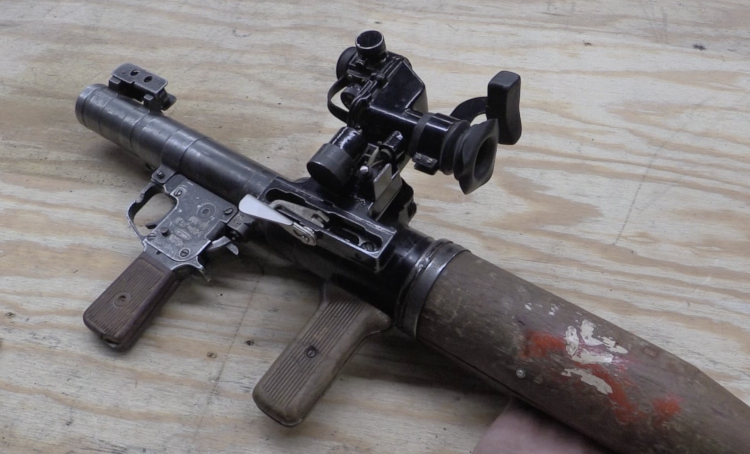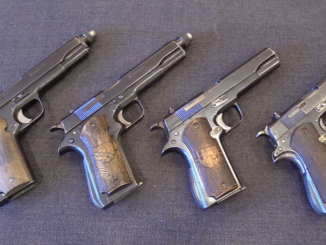Interested in Chinese Warlord-Era pistols? My new book on the subject is now available at:
https://www.headstamppublishing.com/chinese-pistols
It was no secret in the international arms market that Mauser was doing a tremendous business selling C96 pistols into Warlord-era China in the 1920s. The C96 was an imposing and powerful handgun that was highly regarded in China. Spanish companies including Bestigui Hermanos took note, and started to produce pistols specifically for the Chinese market.
For Bestigui, this included a visual copy of the C96 with simplified lockwork. If was introduced in 1926 as the Model H, and quickly accompanied by a fully automatic version, the MM31. Both of these were popular in China, and both were copied by domestic Chinese arsenals and artisans. Today we’re looking at a copy of a Model H, along with it’s stripper clip bandolier.




When was Mauser allowed to resume weapons manufacture under Versailles?
If I understand https://www.jaegerplatoon.net/PISTOLS1.htm claiming
After losing World War 1 Germany signed peace treaty of Versailles, which forbid it to manufacture pistols which had 9 mm x 19 calibre or barrel length that exceeded 100 mm. This led to Parabellum M/20 with 7,65 mm calibre and 95 mm / 98 mm long barrel being introduced to production in Germany around 1920.
Ban was not total and automatic pistol could be procured legally if they met certain criteria.
For example Mauser Werke was able to design and produce WTP https://guns.fandom.com/wiki/Mauser_WTP since around 1921
To be exact, the dimensions were not mentioned in the Versailles Treaty. The regulation that handguns with a “barrel length over 98 mm” or a caliber “larger than 8 mm” were war material, was a ruling of the International Military Control Commission. The numbers can be found in the German Kriegsgerätegesetz of 1927.
With a locking block pinned in the receiver, it should be interesting how it stays locked with the bolt in the recoiling barrel extention.
I take it there’s a good reason 24/12 can’t be December 24th?
Probably not as most employees would have been rushing around purchasing last minute items and not at the bench.
The stuff above it indicates the stamping was done on the Japanese or Chinese side.
Very likely unlikely, given that the majority of staff would have been frantically shopping for last-minute supplies rather than sitting at the bench.